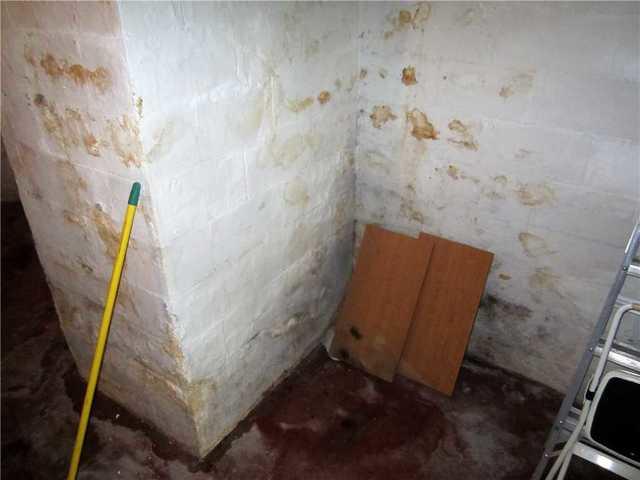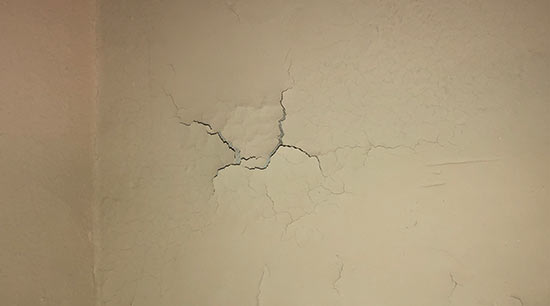What're your concepts on Water Stains on Walls?

Water stains on walls are not pleasurable to the eyes. Sometimes it seems practically unavoidable to experience water stains on wall surfaces in homes.
Homeowners living in moist areas regularly deal with the concern of water spots on walls. With exact as well as all-around details on the causes of water discolorations as well as prompt repair procedures, you will constantly be a step in advance of such incidents.
3 Usual Root Causes Of Water Stains on Walls
Contrary to common belief, water stains on walls do not always stem from poor building materials. There are several reasons for water stains on wall surfaces. These include:
Poor Water drainage
When making a building strategy, it is crucial to ensure adequate water drainage. This will protect against water from leaking right into the walls. Where the drain system is obstructed or missing, below ground dampness builds up. This links to excessive wetness that you notice on the wall surfaces of your structure.
The leading cause of wet wall surfaces, in this situation, can be a poor water drainage system. It can additionally be because of poor monitoring of sewage pipes that go through the structure.
Damp
When warm wet air meets with dry chilly air, it causes water droplets to form on the wall surfaces of buildings. This takes place in restrooms and also cooking areas when there is steam from food preparation or showers. The water beads can discolor the surrounding walls in these parts of your house and infect other locations.
Damp or condensation influences the roofing system and walls of structures. This creates them to show up darker than other areas of the home. When the wall is wet, it develops an ideal setting for the development of microbes and fungis. These may have damaging impacts on wellness, such as allergies and respiratory system disorders.
Pipeline Leaks
Most houses have a network of water pipes within the wall surfaces. It constantly enhances the stability of such pipes, as there is little oxygen within the walls.
Yet, a disadvantage to this is that water leakage influences the walls of the structure as well as triggers prevalent damage. An indicator of defective pipes is the look of a water tarnish on the wall surface.
Water Spots on Wall: Repair Work Tips
When dealing with water spots, property owners would generally want a quick repair. They would soon understand this is counterproductive as the water stains repeat. So, here are a couple of valuable suggestions that will guide you in the fixing of water stains on wall surfaces:
Pro Idea
A houseplant in your home also increases its humidity. So, if your home is currently damp, you might wish to present houseplants with very little transpiration. An instance of suitable houseplants is succulents.
Conclusion
Although nobody wishes to have water stains on walls in their house, it can occur to the very best of us. This write-up provides you take advantage of, as you now know just how to handle this mishap if it does take place.
It is always best to hire professional solutions to assist deal with the damages in your house.
Often it appears practically unavoidable to experience water discolorations on walls in houses.
In contrast to popular belief, water stains on wall surfaces do not constantly stem from poor building products. There are numerous causes of water discolorations on wall surfaces. The water droplets can stain the bordering walls in these components of your house and spread to various other locations.
Right here are a couple of handy ideas that will assist you in the repair work of water stains on walls:
CHECKING FOR WATER DAMAGE
Water damage can be costly, and it may begin before you even notice the first signs of trouble. Water damage can cause mold and mildew in your walls and floors, which can create an abundance of health concerns for your family. It can also lead to costly repairs of various appliances and general home fixtures. To avoid the pricey consequences of water damage, here are Warner Service’s top 5 places you should check:
The walls – The easiest place to spot the beginnings of water damage is on the walls and ceilings of your home. If water damage is present, there will most likely be water stains, especially around the windows and doorframes, and/or cracks in the drywall. If a stain looks unusual (discolored to brown, black or gray, raised texture), has a swollen appearance or is soft to the touch, contact a professional immediately. The pipes – To avoid water damage, consistently check the pipes in your kitchen (especially the dishwasher and ice maker), bathrooms, laundry room (specifically washing machines) and basement for corrosion, leaks and water stains. Pay special attention to where the pipes connect in your home and the location of caulking around the bathroom fixtures, including toilets, sinks, showers and tubs. Missing or loose caulking and grout could be signs of leaking water. This seepage can also quickly cause mold and rust, so double check your water heater and tank for wet spots on the floor. The floor – Water damage is very easy to spot on the floor. Look for any warping or buckling of the material, especially in the basement. If your home has wood flooring, look for bright white or dark stains. If your home has carpeting, keep it dry and clean. A damp carpet that smells of mold could cause water damage and health problems. To avoid this, consider installing floor pans under your appliances to help prevent damages from small, slow and undetected leaks. The basement and attic – If your basement or attic smells odd check for mold and mildew around the area, especially the valley where the roof meets. While you are inspecting those areas, check for wall cracks, floor stains, rust and dampness in the insulation. If you live in a colder and/or rainier climate, perform routine checks for water damage from melting snow or ice and rain. The exterior – Check the roof for damaged flashing and missing, cracked or curled shingles. There should also be no standing water anywhere outside your home. This could be caused by puddles, leaky rain gutters or hoses, poor drainage, or short gutter spouts. Invest in a sump pump system or water flow monitoring system, and perform routine maintenance on these outdoor appliances to avoid indoor water damage.

I am just very occupied with Water Stains on Walls and I'm hoping you enjoyed reading my entry. Don't hesitate to take a moment to share this post if you liked it. I take joy in reading our article about .
Visit Site